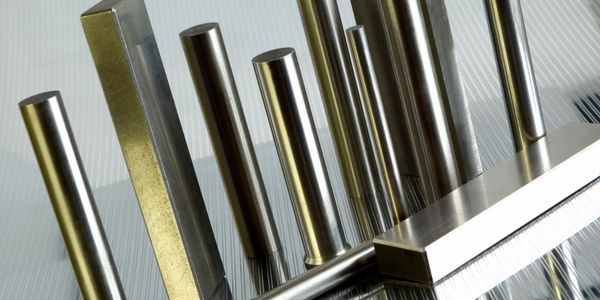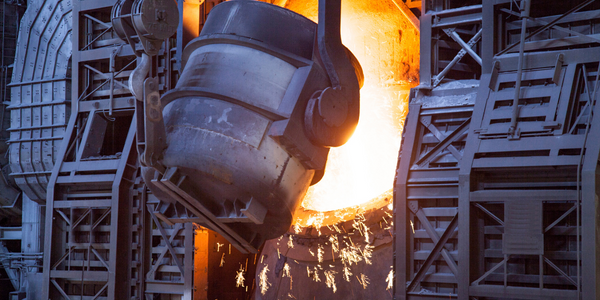Download PDF
Apollo Engineering's IoT Solution for Wheeled-Bobsled Redesign
Technology Category
- Sensors - Torque Sensors
Applicable Industries
- Metals
Applicable Functions
- Product Research & Development
Use Cases
- Virtual Prototyping & Product Testing
Services
- Hardware Design & Engineering Services
- Testing & Certification
The Challenge
Apollo Engineering was tasked with the challenge of re-engineering the aging, four-person wheeled-bobsled vehicles at Park City, Utah, which were providing a rough, uneven ride to the customers. The original design of the bobsled consisted of a two-piece fiberglass body connected by a steel yoke bolted to both pieces. The body design necessitated a long and poorly supported yoke. The challenge was further complicated by significant changes to the wheels and suspension system of the bobsled, including the removal of an axle in the middle of the vehicle, to produce a smoother ride. This meant that the yoke had to be redesigned and the forces on it had to be re-evaluated to ensure that it could withstand the stress, strain, and fatigue for safety purposes.
About The Customer
Apollo Engineering is a reputable engineering and design firm known for providing high-quality engineering services at a reasonable price. The team boasts an extensive engineering background in a variety of industries, including investment casting, design of aircraft landing gear, heavy construction vehicles, autonomous vehicles, robotics systems, and amusement rides. The staff includes Professional Engineers licensed in the state of California for Mechanical engineering. Their expertise and innovative approach to problem-solving have made them a go-to solution for complex engineering challenges.
The Solution
Apollo Engineering utilized ANSYS Mechanical to perform a strength calculation on the yoke for a particular load case. They compared the stress to yield strength and performed structural simulations on the redesigned yoke to determine stress, strain, and fatigue for particular load cases. The fatigue strength obtained by simulation was compared to the AWS code for steel. The team iterated on the design of the steel yoke connector and ran strength and fatigue simulations again on ANSYS Mechanical until a viable design was achieved. This approach allowed Apollo Engineering to virtually test hundreds of variations of the yoke shape and thickness in a week to arrive at an optimal design.
Operational Impact
Quantitative Benefit
Related Case Studies.

Case Study
Goldcorp: Internet of Things Enables the Mine of the Future
Goldcorp is committed to responsible mining practices and maintaining maximum safety for its workers. At the same time, the firm is constantly exploring ways to improve the efficiency of its operations, extend the life of its assets, and control costs. Goldcorp needed technology that can maximize production efficiency by tracking all mining operations, keep employees safe with remote operations and monitoring of hazardous work areas and control production costs through better asset and site management.

Case Study
KSP Steel Decentralized Control Room
While on-site in Pavlodar, Kazakhstan, the DAQRI team of Business Development and Solutions Architecture personnel worked closely with KSP Steel’s production leadership to understand the steel production process, operational challenges, and worker pain points.

Case Study
Bluescope Steel on Path to Digitally Transform Operations and IT
Increasing competition and fluctuations in the construction market prompted BlueScope Steel to look toward digital transformation of its four businesses, including modern core applications and IT infrastructure. BlueScope needed to modernize its infrastructure and adopt new technologies to improve operations and supply chain efficiency while maintaining and updating an aging application portfolio.

Case Study
RobotStudio Case Study: Benteler Automobiltechnik
Benteler has a small pipe business area for which they produce fuel lines and coolant lines made of aluminum for Porsche and other car manufacturers. One of the problems in production was that when Benteler added new products, production had too much downtime.

Case Study
Continuous Casting Machines in a Steel Factory
With a very broad range of applications, steel is an important material and has been developed into the most extensive alloy in the engineering world. Since delivering high quality is absolutely crucial for steel plants, ensuring maximum productivity and the best quality production are the keys to competitiveness in the steel industry. Additionally, working conditions in steel factories are not suitable for workers to stay in for long periods of time, so manufactures usually adopt various machines to complete the steel production processes. However, the precision of these machines is often overestimated and the lack of flexibility also makes supervisors unable to adjust operating procedures. A renowned steel factory in Asia planned to improve its Distributed Control System (DCS) of furnaces as well as addressing the problem of insufficient accuracy. However, most well-known international equipment suppliers can not provide a satisfactory solution and local maintenance because the project needed new technologies to more accurately control equipment operations. By implementing Advantech’s automated monitoring and control solution, steel factories can not only improve the manufacturing processes but can also allow users to add additional functions to the existing system so as to make sure the operation runs at high efficiency.

Case Study
Automated Predicitive Analytics For Steel/Metals Industry
Asset to be monitored: Wire Compactor that produces Steel RebarCustomer Faced The Following Challenges:Dependent upon machine uptime.Pressure cylinders within the compactor fail to control compression and speed causing problems in binding the coil.Equipment failure occurs in the final stage of production causing the entire line to stop, can you say bottleneck?Critical asset unequipped with sensors to produce data.





